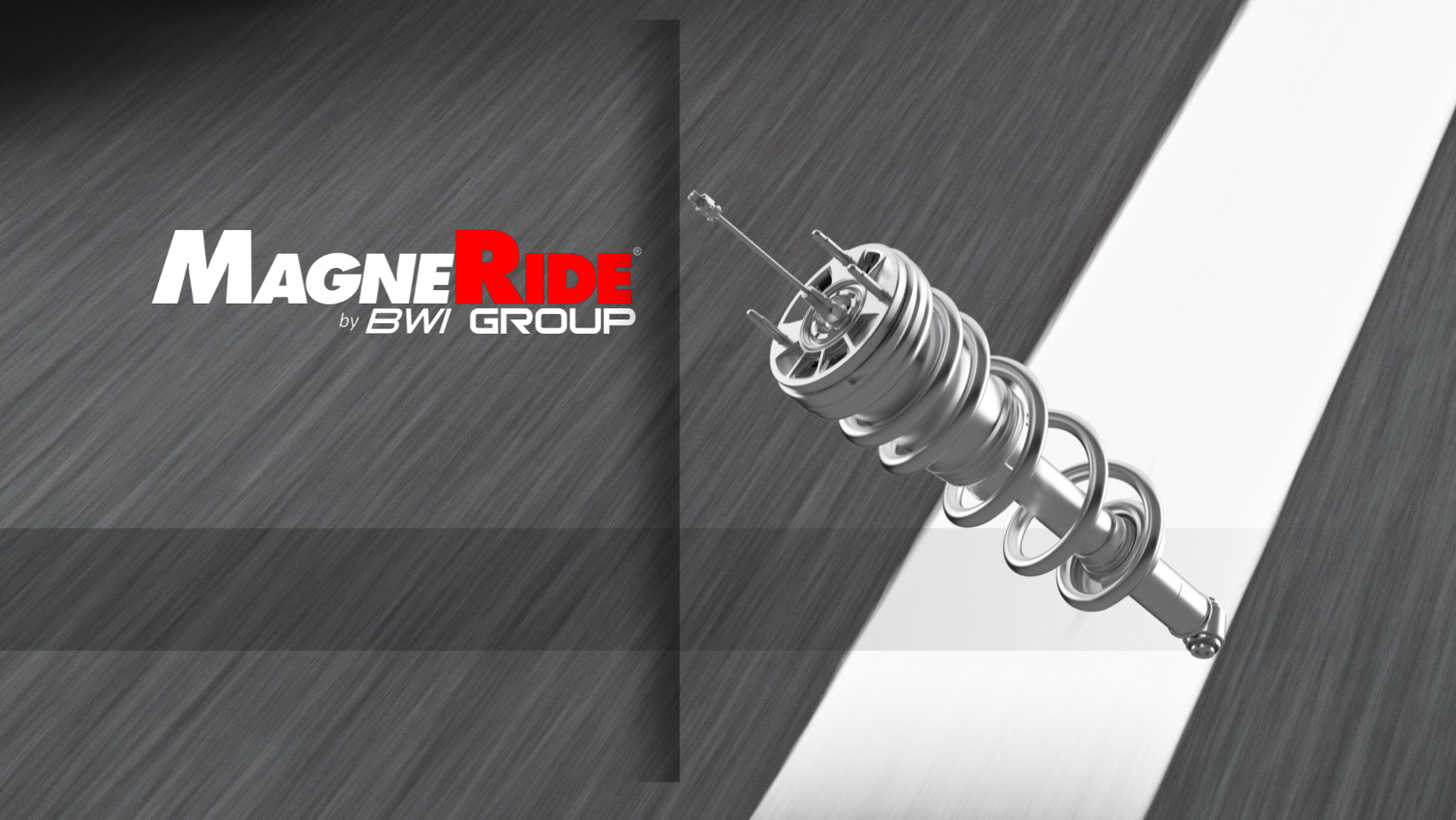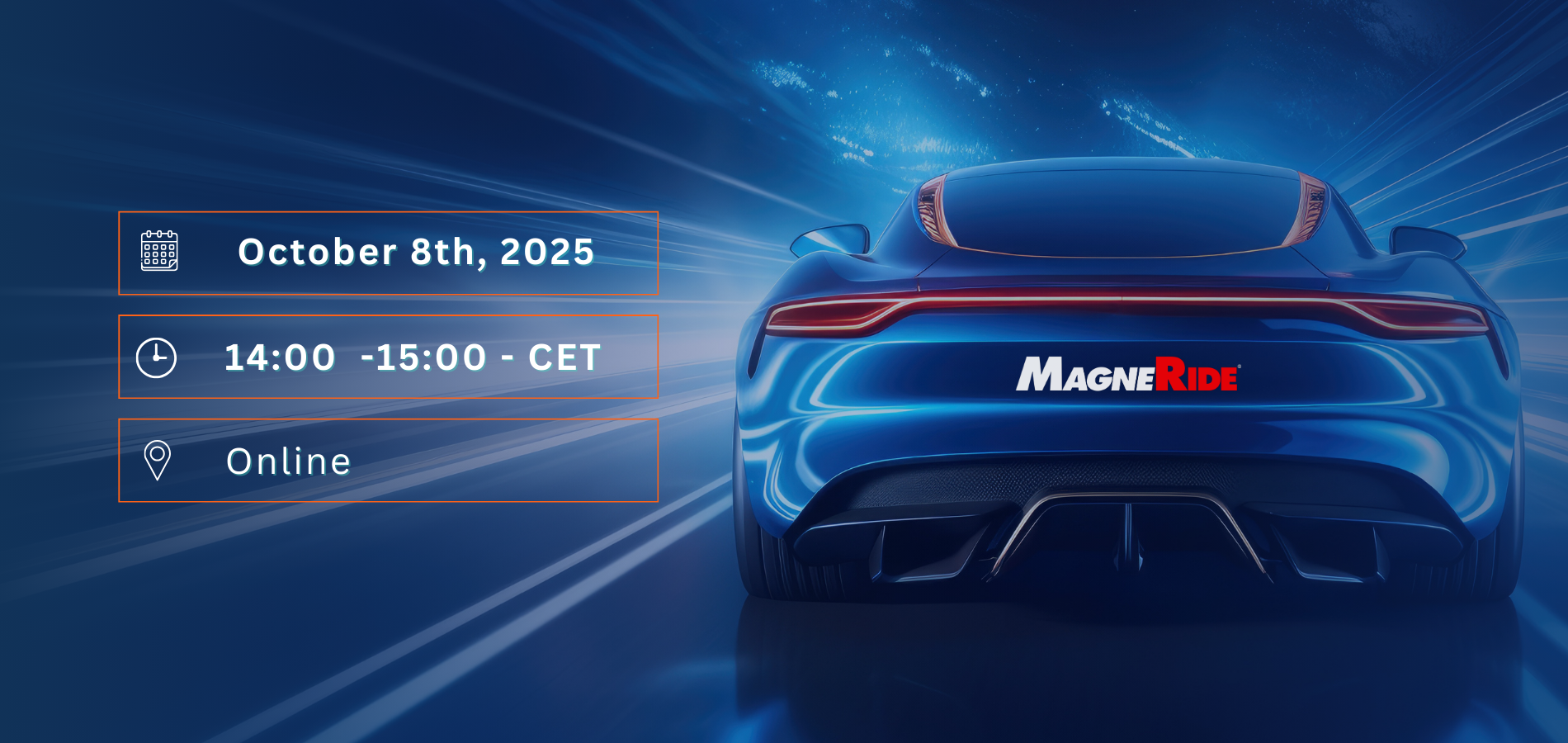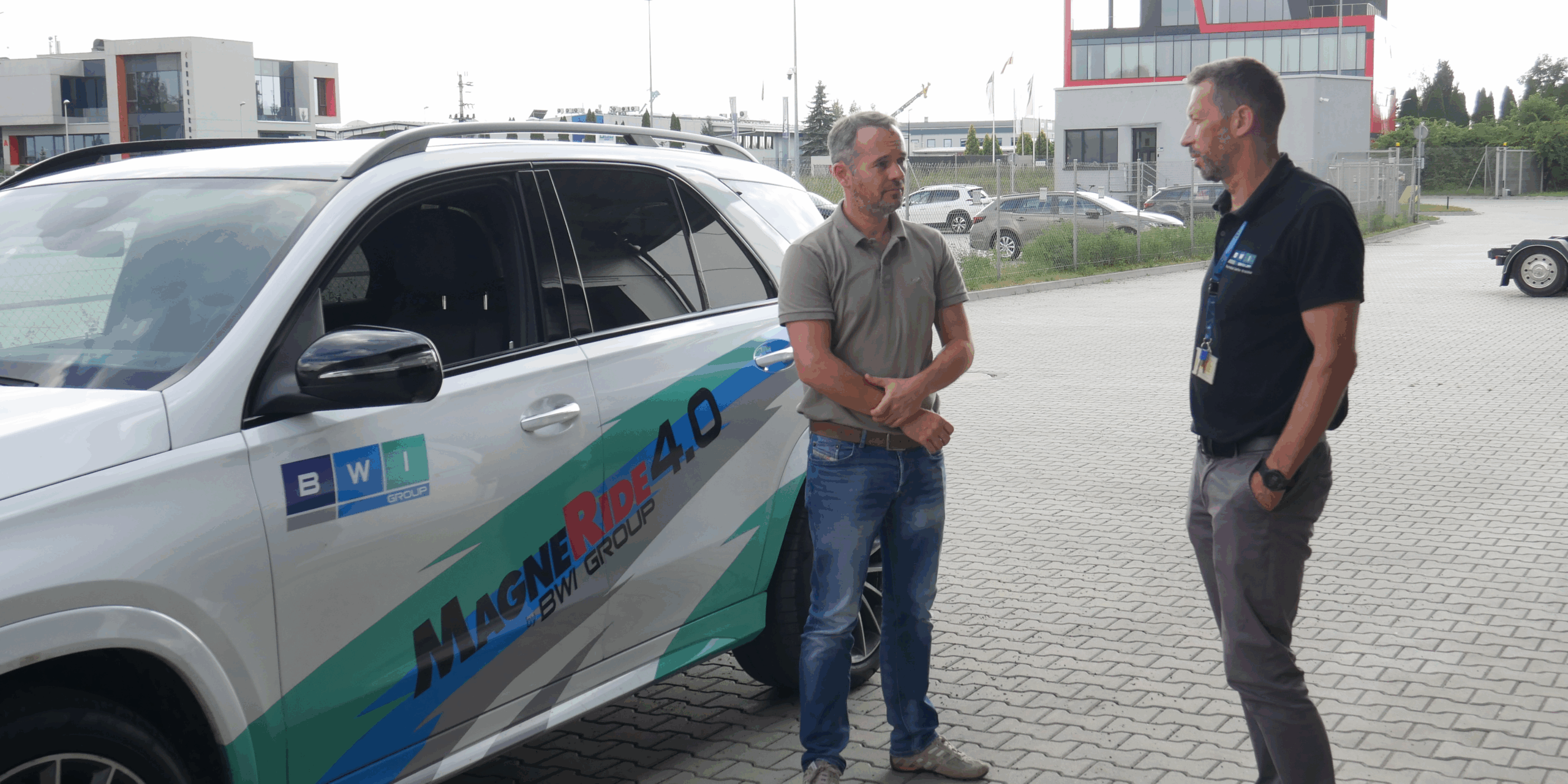Interview with Philippe Germain, Chief Engineer at BWI Group
MagneRide®, BWI Group’s semi-active suspension technology, is unique in the industry for its use of magnetorheological fluid and its ability to adapt damping forces a thousand times a second. Since its debut in 2002, it’s been the choice of leading performance car manufacturers but as the industry shifts to electric and connected vehicles it is now finding broader applications. We spoke with Phillipe Germain, Chief Engineer at BWI Group, to discuss the latest generation of MagneRide and how it has been designed for the industry’s latest trends.
Q: Let’s start from the top, what is MagneRide and how does it work?
PG: MagneRide is a semi-active suspension system that uses a magnetorheological fluid, which is essentially a damper fluid filled with iron particles. When a magnetic field is applied, those iron particles align within a simple linear orifice, and the aligned particles provide resistance to flow, resulting in a variable damping force. We can precisely and quickly change the damping force to provide high levels of body and wheel control.
Q: How does this compare to solenoid-based semi-active systems?
PG: Solenoid-based dampers use traditional hydraulic fluid flowing through multiple passive and solenoid-actuated valve systems. The result is a damper construction with a significant number of additional components, and which is inherently more complex. MagneRide dampers use fewer components, making it easier to tune and resulting in a more robust solution for NVH and warranty issues.
Q: MagneRide started in performance cars. How has its application evolved?
PG: That’s right. The technology was first adopted by high-performance vehicle manufacturers. They valued the control MagneRide provides for body motion and handling, especially in the 1 to 3 Hz frequency range where handling dynamics live.
But today we’re seeing MagneRide on sedans and SUVs, including electric vehicles, in both North America and China. We’ve made major strides in design efficiency, manufacturing, and supply chain scale, so cost is no longer a barrier. In fact, MagneRide is now comparably priced to solenoid-based systems, which makes it affordable not only for sports models of Lamborghini and Ferrari, but also for other vehicle segments.
Q: How has the industry changed since it was first introduced?
PG: Since MagneRide was first introduced, vehicles have become much heavier. In 2016, the average weight of a car was around 1550kg, this is now closer to 1950kg, a 25% increase and many BEVs are in the 2.5 tons range. This added weight makes controlling the body and suspension very challenging. This is something MagneRide is very good at. Along with more competitive pricing, this advantage is why we are increasingly seeing MagneRide applied to SUVs and BEVs.
Q: Have you adapted the technology for these new applications?
PG: Semi-active damper performance is about fast and accurate sensing and providing fast and accurate damping forces that meet the desired forces. Heavier BEVs require increased damping forces and do so in a more NVH-sensitive vehicle environment.
We’ve introduced several important technological updates to suit the changing requirements of the industry. First, we’ve added wheel accelerometers to more accurately measure suspension movements. This helps us to refine the damping force even more precisely. We’ve also integrated an inertial measurement unit (IMU) to better capture vehicle body dynamics.
Another big improvement is our new bi-directional damper current control solution. It allows us to change the damper’s magnetic flux more accurately, which improves response time and control quality. We’ve also developed a new low-friction rod guide and are working on a low-temperature fluid with more consistent viscosity across a wide range of temperatures.
Specifically for heavy vehicles, we now offer a 52mm piston. It delivers about 80% more damping force than our standard units and gives OEMs a much larger operating envelope to work with.
Q: Why are OEMs looking for a larger operating envelope?
PG: Vehicle dynamacists call it turn-up. It’s the ratio between the maximum and minimum damping force available for a given stroke velocity. MagneRide provides a much broader force range than traditional dampers. This includes providing significant damping force at low velocities, something solenoid-based solutions can’t do.
This is particularly useful for modern vehicles with multiple drive modes. A lot of solenoid systems can’t offer a noticeable difference between comfort and sport modes because they’re limited in their operating envelope. With MagneRide, you really feel the difference. This market-leading turn-up also gives engineers flexibility to tune the vehicle’s character to exactly how they want it.
Q: How does MagneRide simplify vehicle tuning and development for OEMs?
PG: With traditional valve-based dampers, tuning is a hands-on, hardware-heavy process. When we are developing a valve-based damper for a customer, we literally show up with a truck full of different shim stacks and valves to test. We trial different combinations to get the right damping and feel for the vehicle. Every change means disassembling and reassembling the damper, testing it and then fitting it to the test vehicle. So it is a time-consuming task.
With MagneRide, all that tuning is done in software. You plug in a laptop, adjust the control maps, and you’re done. It dramatically reduces development time and cost. And because we provide a control library for customers using their own ECUs, they can get up and running quickly, there is no need to develop low-level controls from scratch.
Q: What is the key performance differentiator for MagneRide?
PG: I’d say the ability to control wheel and body motions independently. In traditional dampers, if you want more body control, you usually sacrifice comfort by stiffening the whole system, including how the wheels respond to high-frequency road inputs. With MagneRide, we can decouple those. That means better ride quality and better handling at the same time, which is something solenoid-based systems really struggle to achieve.
Q: How does this independent control work in real-world driving scenarios?
PG: The system processes inputs from both the road and the driver. It detects wheel movement and driver intentions, such as throttle position, steering input. It then calculates the required damping forces accordingly. For example, when cruising on the highway in a straight line, the vehicle can be optimised for comfort with softer settings. But when the driver enters a corner, the system immediately provides enhanced body control.
Q: So what’s next for MagneRide and BWI Group?
PG: We’re continuing to make the system more modular and accessible. OEMs can buy the full system from us, including software, ECU, sensors and dampers, or they can just use the dampers and provide their own control system. We’re also working on a new modular piston design that supports lower current requirements, which makes integration even easier for customers using their own ECUs.



